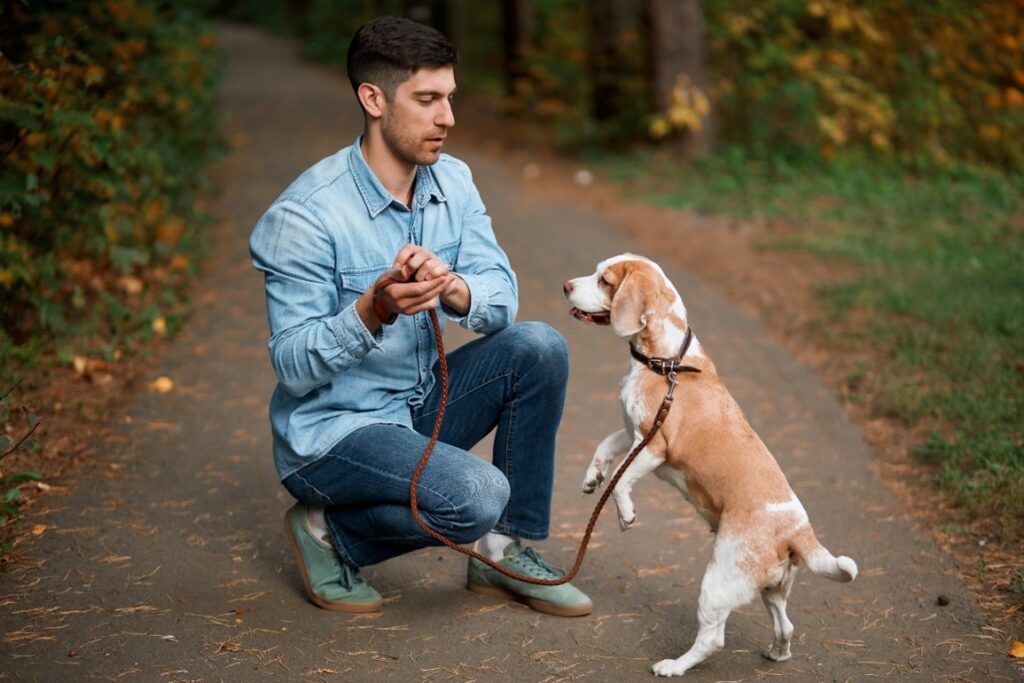Man’s best friend is known for being able to understand and follow the usual commands to sit or stay with the right training. However, there is so much more that a dog is capable of as long as the owner is aware of how to make the most of their pet’s potential.
According to dog training expert, Marissa Corbett of Shamong, NJ, the average dog is capable of more than the basic “sit, stay, come” commands. The key to unlocking a dog’s full potential is in using the relationship built during standard training. This is coupled with new techniques for challenging and encouraging the dog, which comes with many benefits such as stimulation.
Below are a few of the best tips and techniques for advancing a dog’s training. This will not only result in the dog’s tricks and commands reaching the next level, but several benefits to the relationship between dog and owner afterward.
Ways to Improve Training and Commands
A furry friend is capable of understanding not only specific commands given by a devoted owner, but even some of the moods and desires of their owner without needing to be trained. With such an amazingly empathetic capacity for a working relationship, it is no wonder many dog owners feel compelled to take their dog’s tricks and training to the next level. The question is, how? Let’s examine some of the best tips to remember when advancing a dog’s training.
Create a Firm Foundation
A firm foundation for a dog who is moving on to more advanced techniques than the usual “come, sit, and stay” commands means that they should reliably and consistently respond to those basic commands. A dog should almost always come when called, respond instantly when told to heel or sit, and display patience and discipline when staying or waiting to move.
‘This will let the dog owner know that their furry friend is ready for the next level. It will also prevent rushing the dog into overwhelming, and sometimes frustrating, chains of commands that they are not ready for.
Responding to Specific Areas and Objects
One of the most natural steps out of basic training and into more advanced techniques is that of targeted training. These commands will have to do with objects or specific places. One example might be teaching a dog to go to their bed or crate on command. Another example might be the simple but fun “fetch,” command, or even a pointing or searching command.
The best way to begin this type of command is to help connect the sound of the command with that area or object, and reward association with treats or praise. As with all dog training, repetition is key. When it seems that the dog is associating the command with the correct object or place, move on to a desired behavior, rewarding the correct action with praise and treats again.

Off Leash Training
Perhaps the most impressive trick a dog with advanced training can do is simply conduct themselves well and remain under their owner’s control even without a leash. Of course, this takes very careful discipline and an advanced stage of work between the dog and their owner before it can be tried in public areas. Trust is the key; a dog should know to obey a command to heel even in the most distracting environments, such as a dog park, while their owner should have no doubt that any command will be obeyed.
To accomplish this, the dog must be taken to controlled environments and gradually left to roam free without a leash, with repetitive training to “heel” or “return” and consistent rewarding for the desired behavior. More distractions or temptations can be gradually introduced, as well as training in new areas, to improve focus. When the results are consistent, everyone will be impressed with a dog that is under complete control even without a leash!
Training Methods
To use any of the above-mentioned tricks, a dog owner must know what kind of training method works best for their pooch. If a dog is very food-motivated, some of the same techniques of treating a desired behavior will continue to work even with advanced training.
However, sometimes using a clicker, which is a handheld object that makes a distinct clicking noise, can become a great way for a dog to associate the correct behavior with praise. This way, even in a crowded space, all the dog needs to hear is a click for effective communication.
Adapting to what might keep a dog interested in new training goals, rather than frustrated or distressed, is one of the best ways for a trainer to make the most of their canine’s potential.
In Conclusion
Advanced training tips for dogs include knowing the dog’s condition and preferred training methods and using those to the advantage of the training goals. Whether teaching a dog to heel after being allowed off-leash or simply associating a desired behavior with a location, the owner must trust that the dog has a firm foundation of obedience and discipline.

